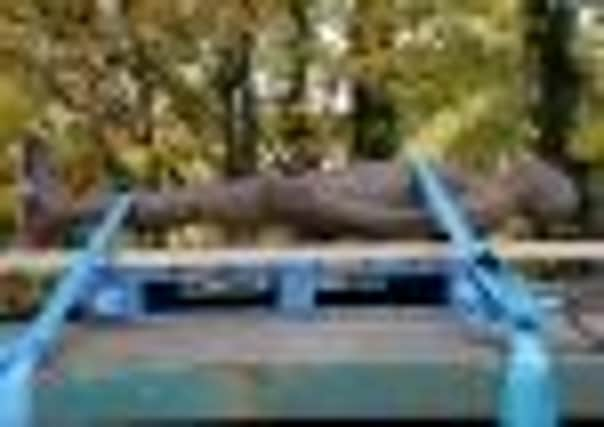Gormley sculptures could move due to weather issues


• Four sculptures, entitled ‘6 Times’ are in storage and will be moved to avoid them toppling over during periods of heavy rainfall
• Sculptures are fitted with tilting mechanism to prevent damage by debris and stop them blocking the flow of water during bad weather
Advertisement
Hide AdAdvertisement
Hide Ad• The Water of Leith Conservation Trust has previously expressed dismay at impasse over statues with council insisting that they are a matter for the galleries
The four sculptures installed in the Water of Leith two years ago have been put into storage while bosses at the National Gallery of Scotland work out what to do with them.
Its director-general, John Leighton, admitted the installation and location of the figures was being reviewed to try to make them more resilient to flooding.
It is thought all four are likely to be moved out of the river, where a major flood prevention project is being carried out by the city council. Strict council regulations mean they cannot be relocated without fresh planning permission being sought, which could take up to a year.
Advertisement
Hide AdAdvertisement
Hide AdThe arts organisation spent three years in talks with Gormley, the creator of the Angel of the North, before the works - officially entitled “6 Times” - were installed in the river, along with two others on dry land, at the Scottish National Gallery of Modern Art and inside Leith Docks.
The Water of Leith Conservation Trust, the charity responsible for the upkeep of the river, has previously expressed dismay at the impasse over the statues, with the council insisting the position of them is entirely a matter for the galleries.
A spokesman for the city council said: “We are aware of the issues regarding the statues and are working with the National Galleries of Scotland to find a solution.”
The four pieces have been missing since as long ago as last August from sites at the Dean Village, Powderhall, Stockbridge and Bonnington.
Advertisement
Hide AdAdvertisement
Hide AdPart of the problem is that - on the insistence of council planners - they were each fitted with a tilting mechanism which meant they would topple over to avoid them being damaged by debris or blocking the river in bad weather.
London-born Gormley, whose most famous work, the Angel of the North in Gateshead was completed in 1998, has been in talks with the galleries about where they should be relocated to.
Mr Leighton said: “The 6 Times art work is an ambitious project that has attracted a great deal of interest from the public. The river figures have been subject to some exceptional flood conditions since their installation and so far, it has proven difficult to reconcile artistic ambition with the forces of nature and the demands of planning authorities. In discussion with the artist we are now reviewing the installation and siting of the figures so that we can improve their resilience to flood conditions without causing obstructions. NGS and the artist remain fully committed to the project and to finding a way to install the figures so that they can remain on view for the enjoyment of the public.”
The city council, which declined to comment on its role in negotiations over the Gormley statues, had previously insisted the tilting mechanisms in the statues were not working properly.
Advertisement
Hide AdAdvertisement
Hide AdBorn in 1950 to an Irish father and a German mother, Antony Gormley went to school at Ampleforth College, a Benedictine boarding school in Yorkshire. He went on to complete a degree in archaeology, anthropology and art history at Trinity College, Cambridge, before spending three years travelling in India and Sri Lanka stuyding Buddhism.
After returning to London in 1974, he attended Central Saint Martins College of Art, Goldsmiths College and Slade School of Art, finishing his studies in 1979.
Almost all his work takes the form of the human body as its main subject, with his own body frequently used as the basis for his metal casts. His first exhibition was held in 1981 at Whitechapel Gallery, in London, and he has gone on to be exhibited at major venues across the globe, such as the Venice Biennale, the Kolnischer Kunstverein in Germany, the Tate Gallery and British Museum in London, the Irish Museum of Modern Art in Dublin, and the Corcoran Gallery of Art, in Washington.